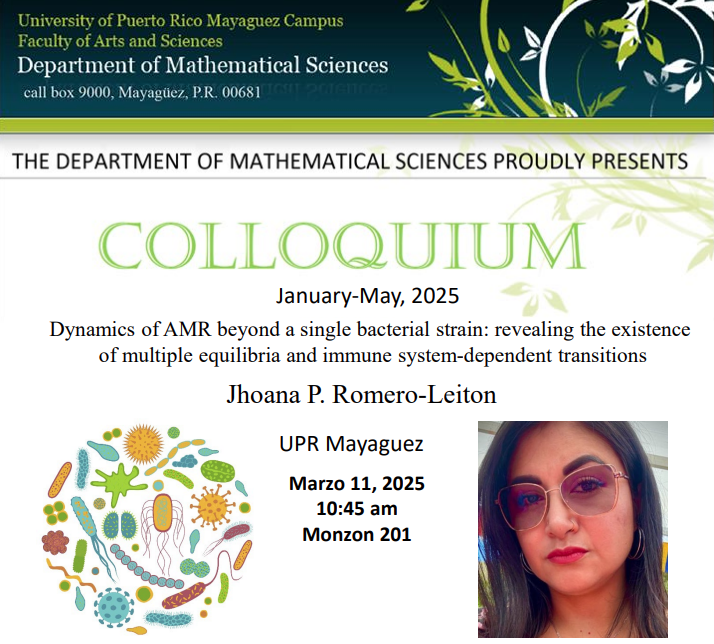Abstract:
In this presentation, we explore the growing threat of antimicrobial resistance (AMR), a major global public health issue that complicates the elimination of harmful microorganisms in the host. Mathematical models have significantly contributed to the understanding of AMR dynamics and identifying strategies to combat bacterial infections, although they have primarily focused on single bacterial strains rather than microbial communities. However, research on microbial consortia remains limited. This study is a step in examining how resistance spreads within microbial communities, emphasizing the ecological dynamics of bacterial competition, and the role of the host immune system in infection control. We introduce a mathematical model that captures AMR propagation by considering competition between two bacterial strains of the same species. Our analysis investigates the stability and bifurcations using different parameters to represent how effectively the host immune system eliminates bacteria. Our findings indicate that bacterial replication rate and immune system efficiency are key factors in the spread of AMR. Bacteria with lower replication rates can be effectively controlled, leading to disease eradication, whereas those with higher replication rates require a stronger immune response for clearance. The model identified nine biologically feasible equilibrium points, four of which corresponded to the distinct immune system types described in the literature. This highlights the importance of maintaining a strong immune system and adopting responsible
antibiotics to slow the emergence and dissemination of AMR.
Place: Monzón 201
Hour: 10:45 a.m.

